
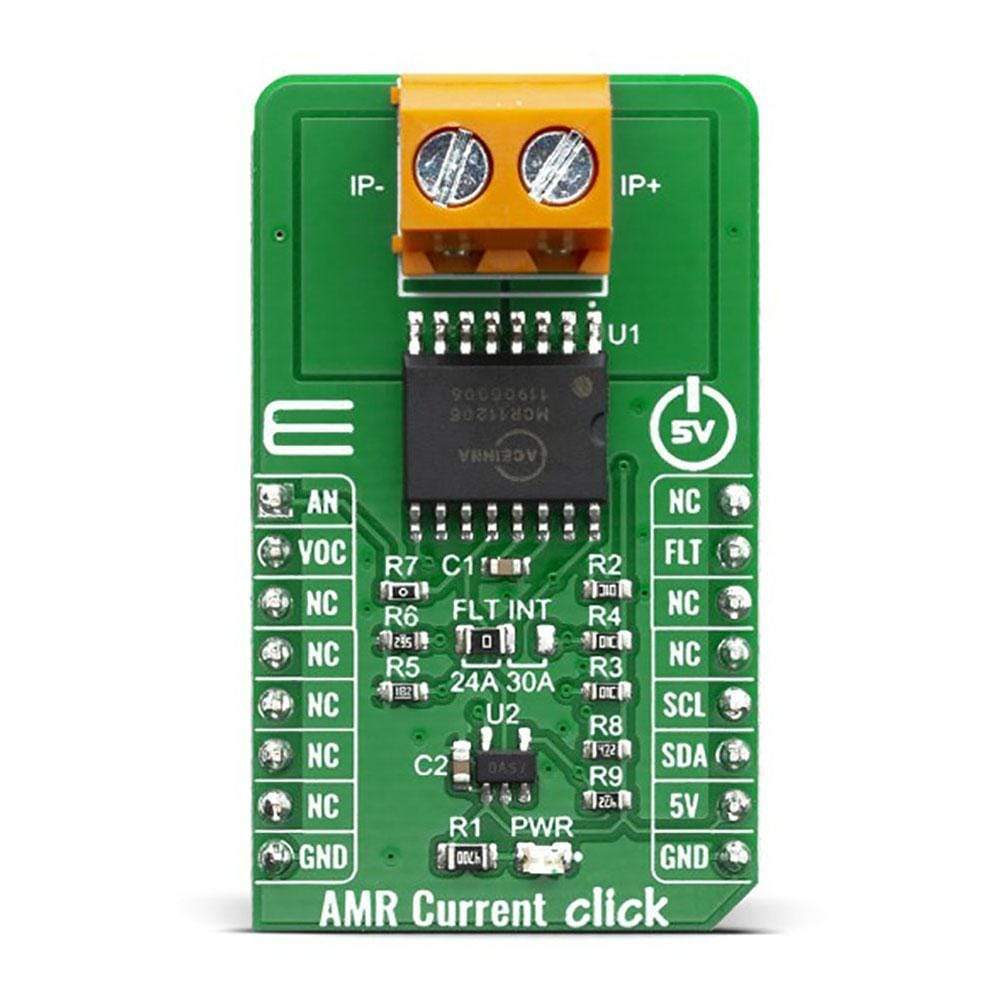
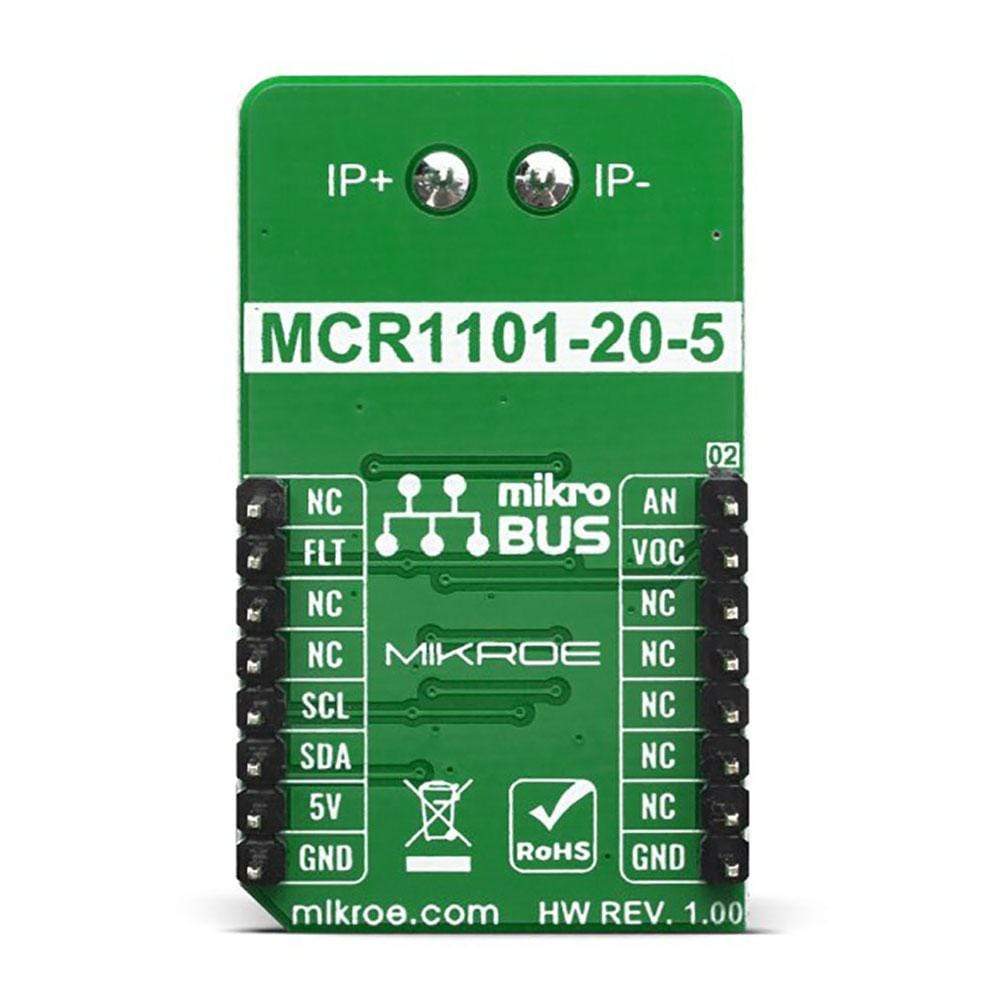
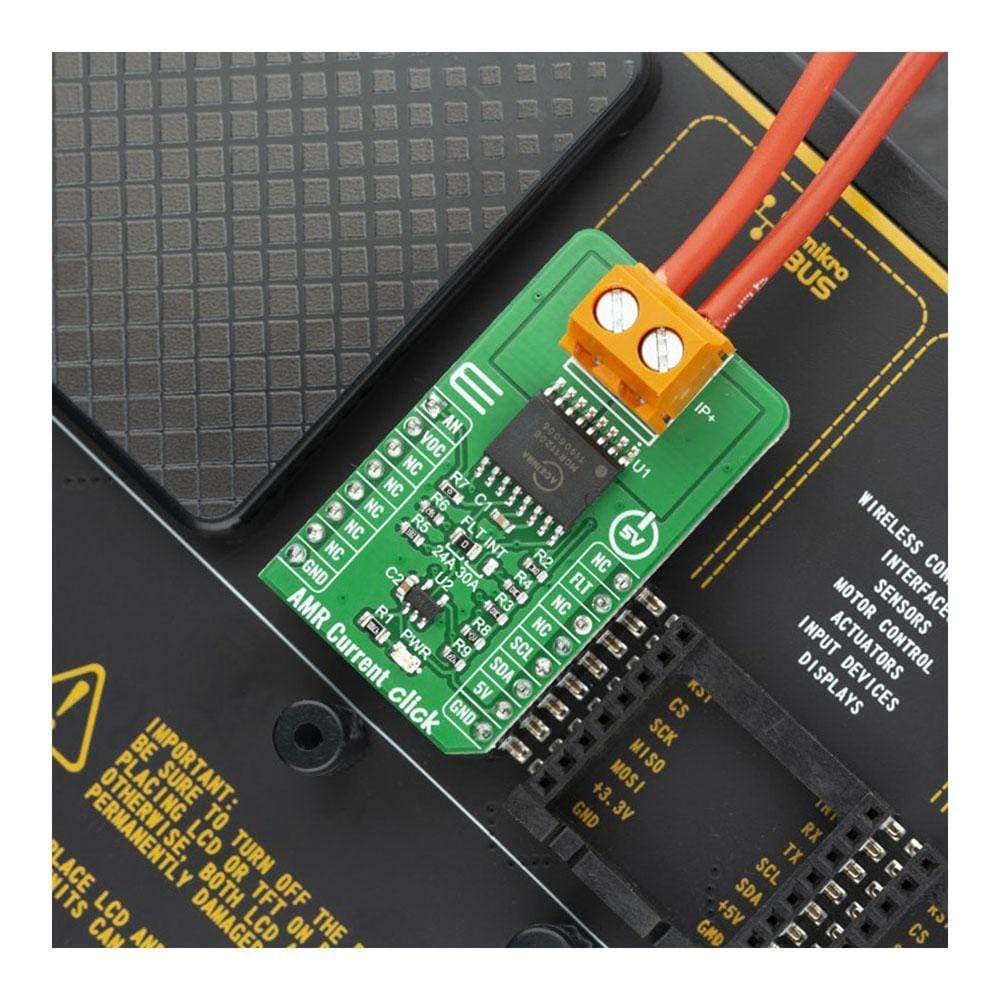
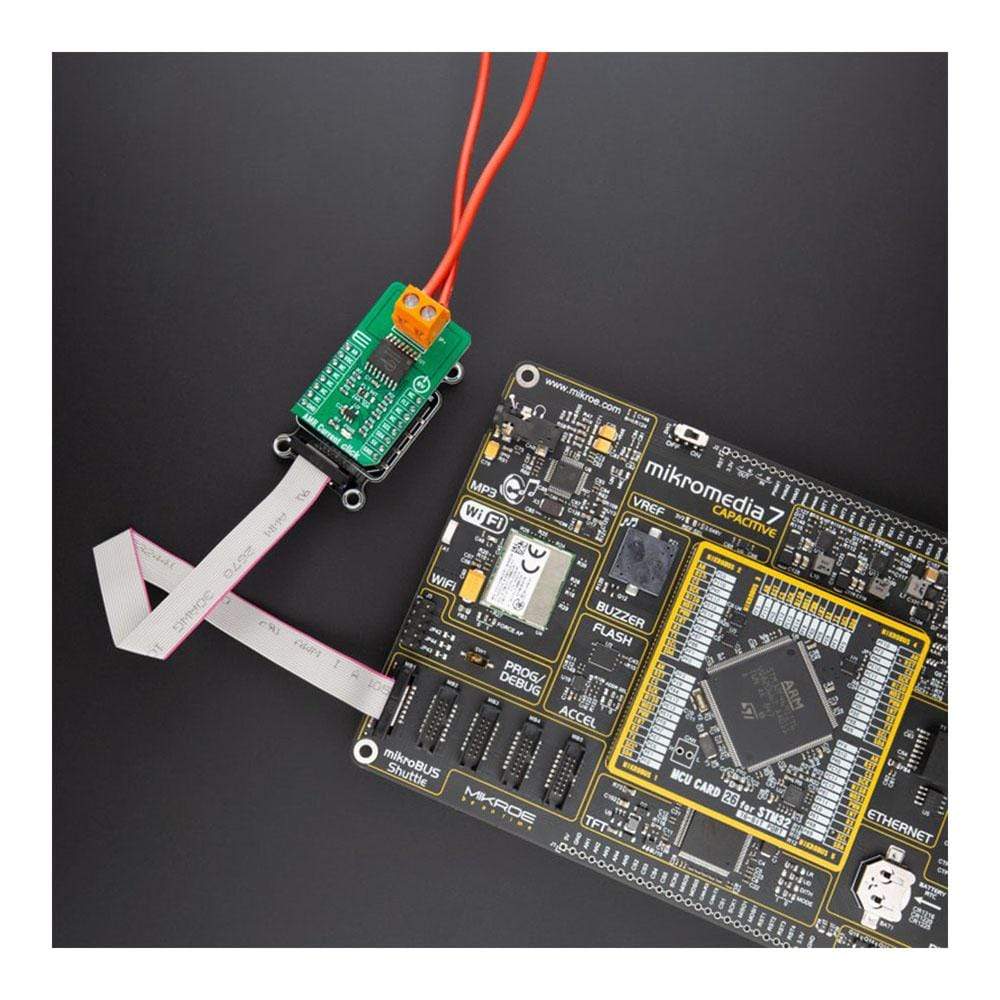
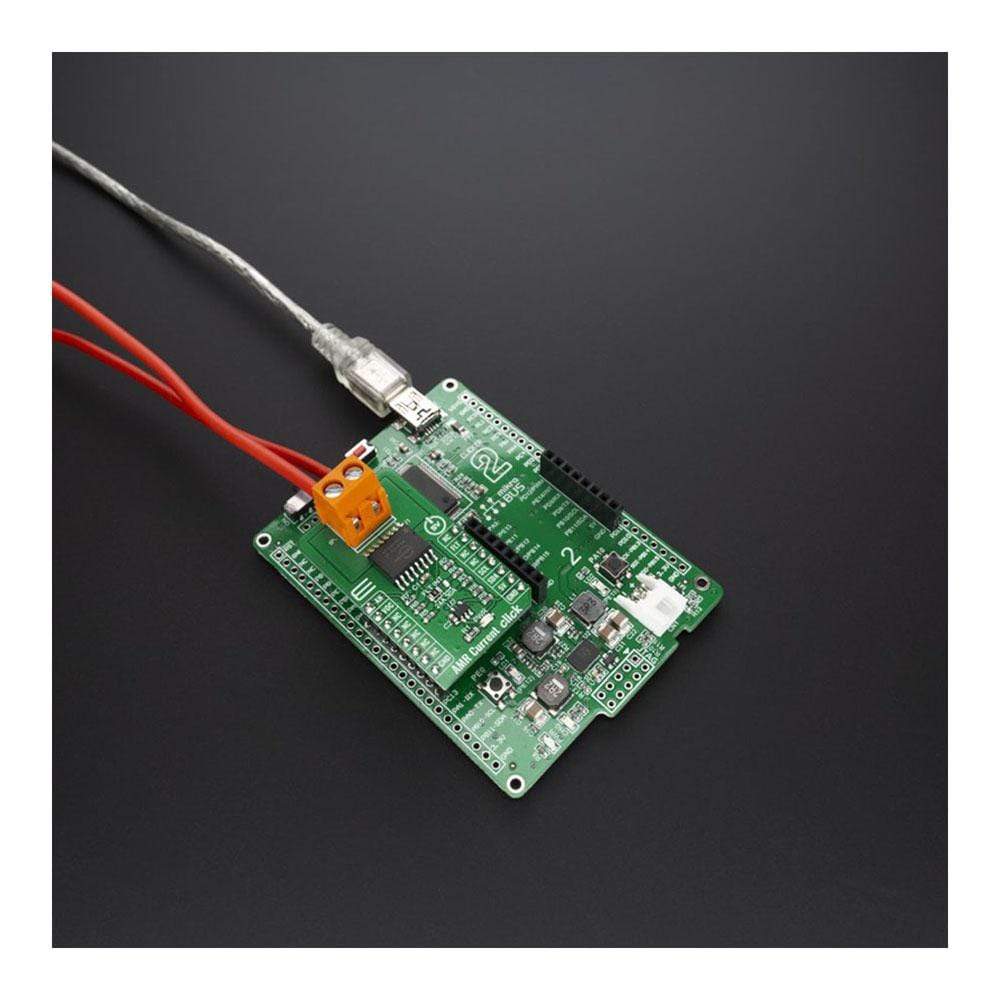
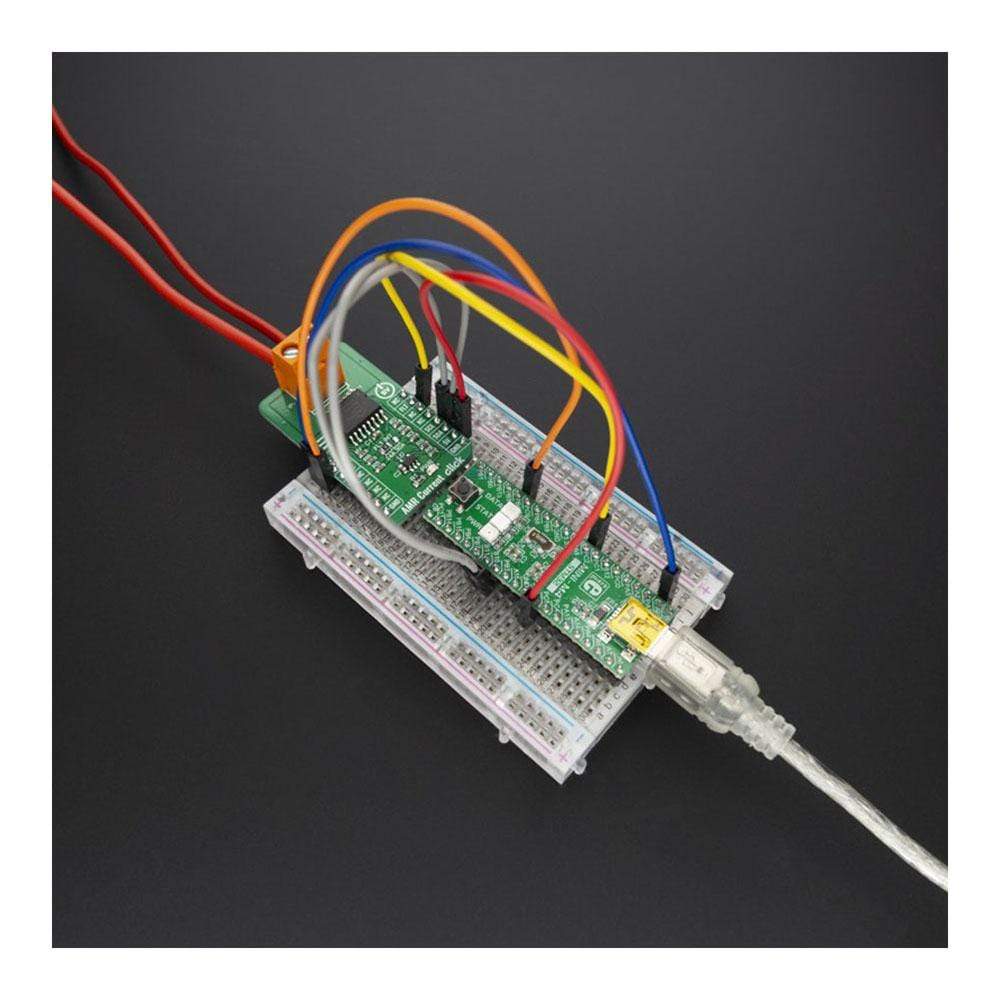
Overview
The AMR Current Click Board™ has fitted ±20A fully integrated bi-directional analogue output current sensors that deliver both high accuracy and high bandwidth. This state-of-the-art Anisotropic Magneto Resistive (AMR) sensor technology provides inherently low noise, excellent linearity and repeatability.
The AMR Current Click Board™ is supported by a mikroSDK compliant library, which includes functions that simplify software development. This Click Board™ comes as a fully tested product, ready to be used on a system equipped with the mikroBUS™ socket.
Downloads
Das AMR Current Click Board™ verfügt über vollständig integrierte bidirektionale analoge Ausgangsstromsensoren mit ±20 A, die sowohl eine hohe Genauigkeit als auch eine hohe Bandbreite bieten. Diese hochmoderne anisotrope magnetoresistive (AMR) Sensortechnologie bietet von Natur aus geringes Rauschen, ausgezeichnete Linearität und Wiederholbarkeit.
Das AMR Current Click Board™ wird von einer mikroSDK-kompatiblen Bibliothek unterstützt, die Funktionen enthält, die die Softwareentwicklung vereinfachen. Dieses Click Board™ wird als vollständig getestetes Produkt geliefert und ist bereit für den Einsatz auf einem System, das mit der mikroBUS™-Buchse ausgestattet ist.
| General Information | |
|---|---|
Part Number (SKU) |
MIKROE-3812
|
Manufacturer |
|
| Physical and Mechanical | |
Weight |
0.02 kg
|
| Other | |
Country of Origin |
|
HS Code Customs Tariff code
|
|
EAN |
8606018719778
|
Warranty |
|
Frequently Asked Questions
Have a Question?
Be the first to ask a question about this.







